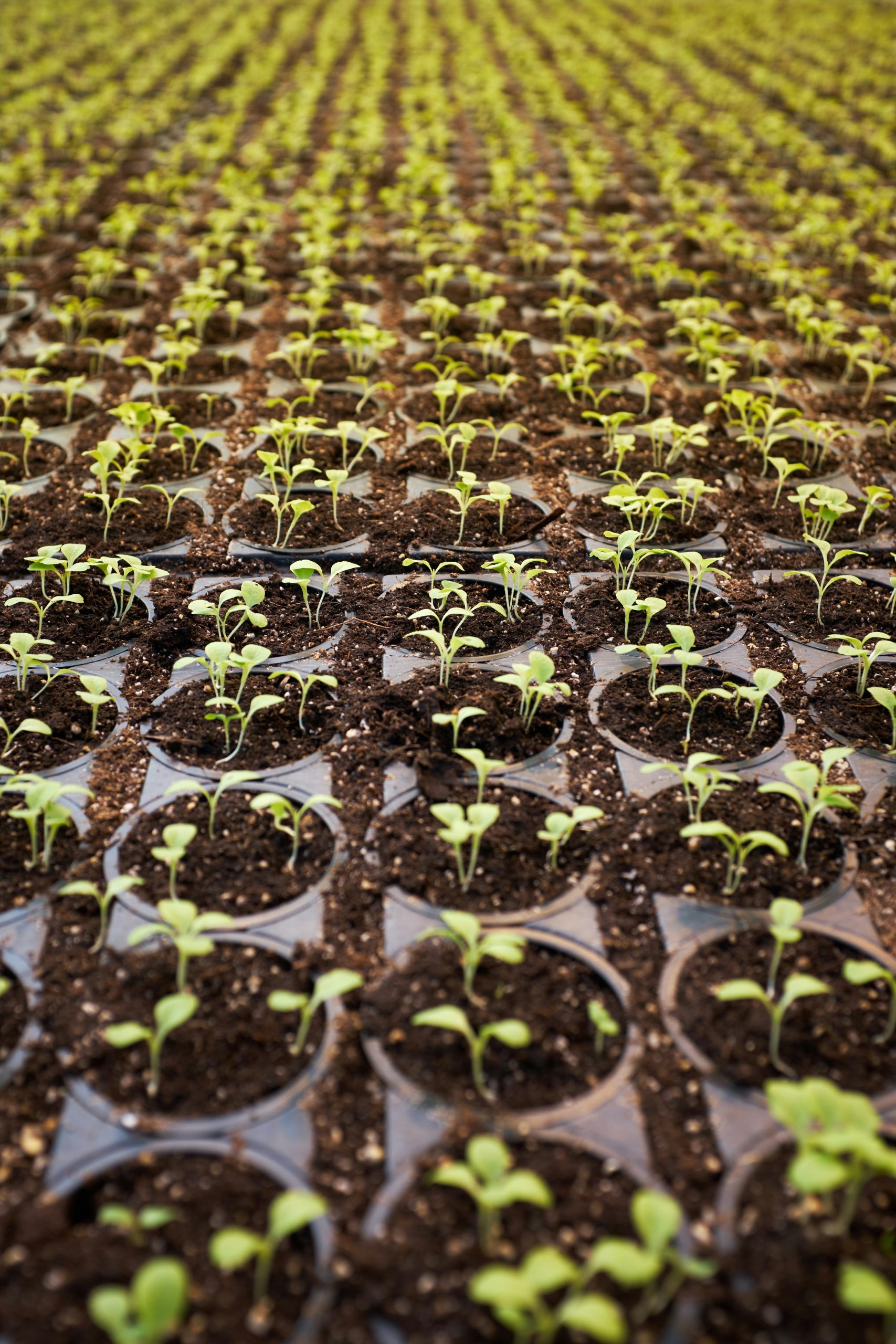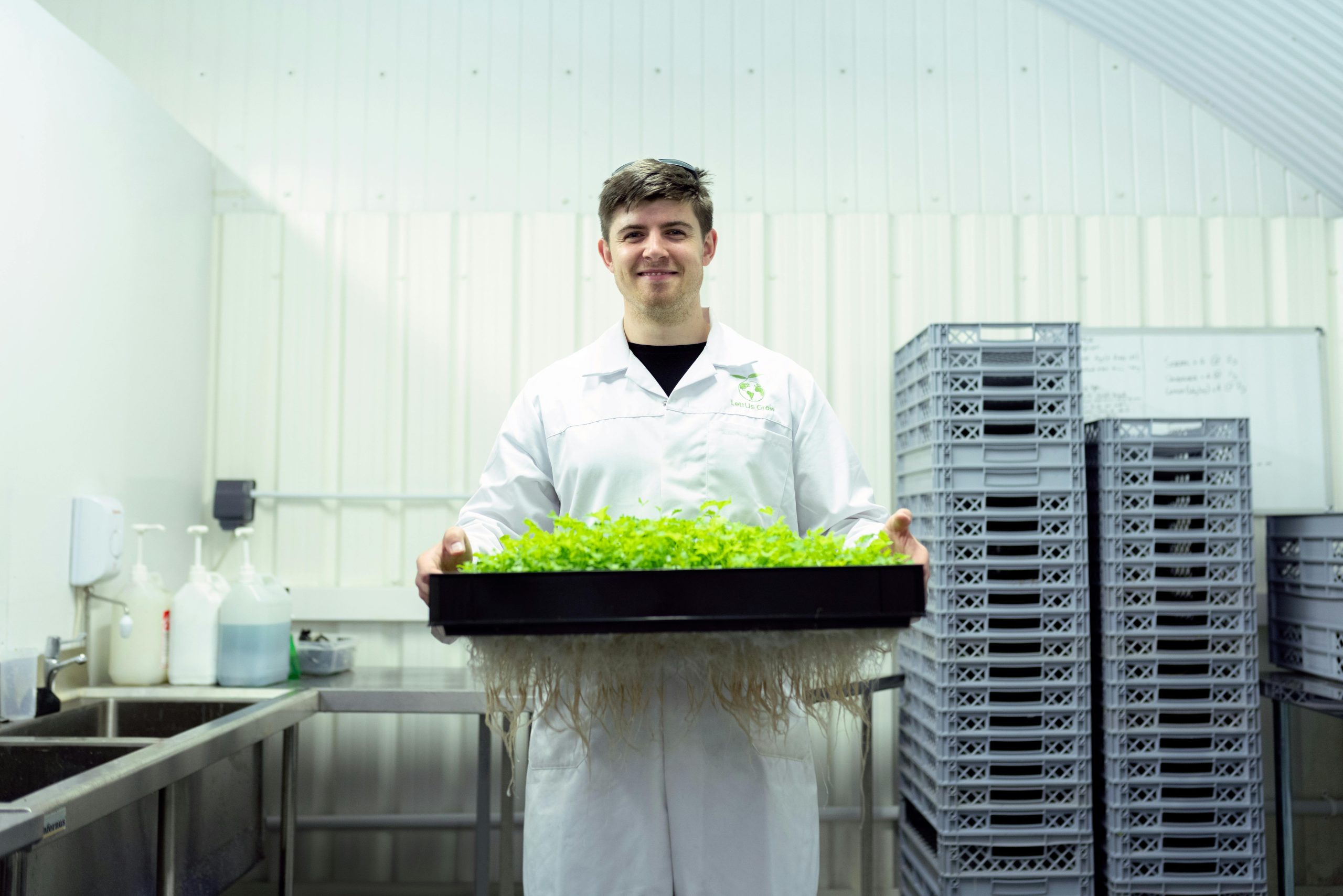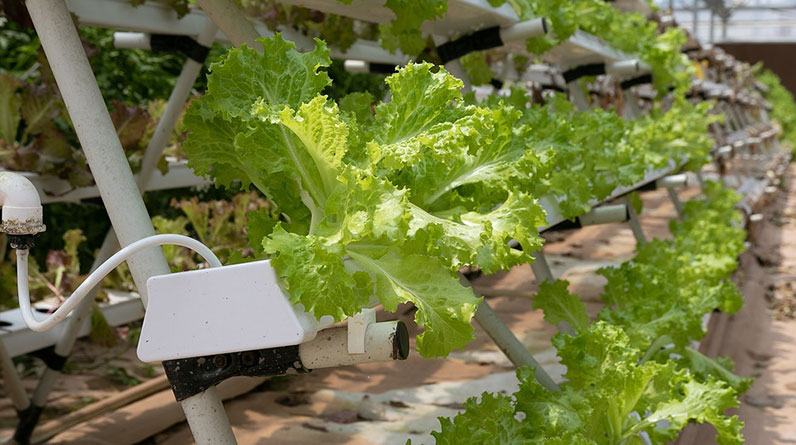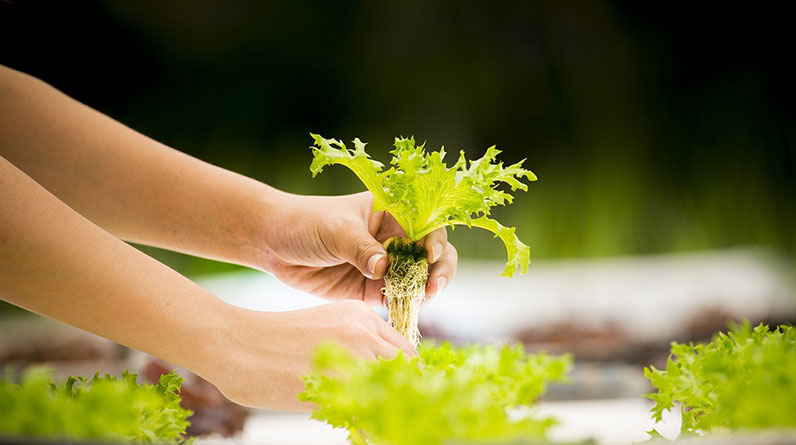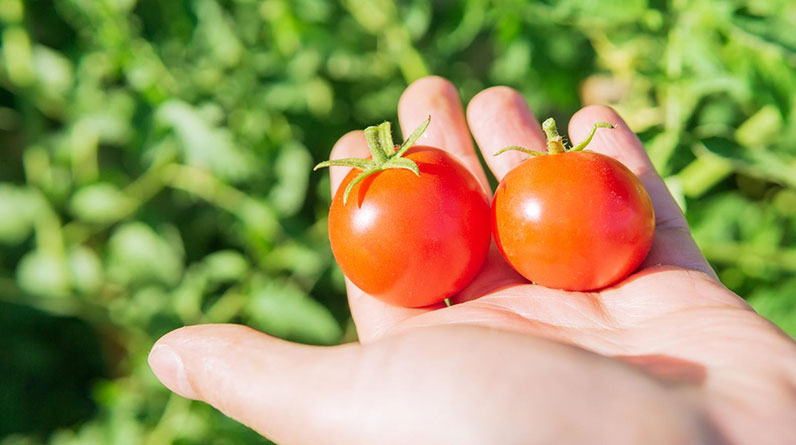
Hey there, fellow garden enthusiasts! Today, I’m really excited to share my journey into the amazing world of soil-less farming, also known as hydroponics. Trust me, once you dive into this, there’s no looking back! Let’s explore the five key areas that make growing crops without soil easier and more enjoyable than ever.
The Basics of Hydroponics
What is Hydroponics?
Hydroponics is a method of growing plants without soil. It uses nutrient-rich water to deliver all the necessary elements that plants need to thrive. The first time I stumbled upon this technique, it blew my mind! I mean, who would’ve thought you could grow veggies without digging in the dirt?
This method can be applied to a wide variety of plants. From leafy greens to tomatoes, hydroponics opens up a whole new world of possibilities. I tried growing basil and was thrilled with how quickly it flourished—talk about instant gratification!
The cool thing is, because there’s no soil involved, you can grow crops in smaller spaces, indoors or outdoors. It’s perfect if you have limited gardening space like I do.
The Types of Hydroponic Systems
When I first got into hydroponics, I was overwhelmed by the different systems available. There are several types, and each has its pros and cons. Personally, I’ve experimented with a few. For instance, there’s the deep water culture system, where plants are suspended in nutrient-rich water—this one’s a personal favorite of mine.
Then there’s the nutrient film technique (NFT), where a thin film of nutrient solution continuously flows over the roots. This method is great for quicker harvesting but does require some monitoring to avoid clogs. I also tried the aeroponic system, where the roots are misted with nutrients—fascinating stuff, right?
Each type has its unique charm and suitability depending on what you’re growing, so do a little research or try a few to see what works best for you!
The Benefits of Growing Without Soil
So why go through all this trouble of growing without soil? For me, one of the biggest perks is the speed of growth. Hydroponically grown plants often mature faster than soil-grown ones. It’s incredibly satisfying to see your hard work pay off in a fraction of the time!
Another advantage is better control over nutrients. In hydroponics, you can mix your nutrient solution to match the specific needs of your plants. This means healthier crops and sometimes even better-tasting produce!
Moreover, there’s less maintenance involved. You won’t have to deal with pesky pests or diseases that thrive in soil. For someone like me who sometimes struggles with traditional gardening woes, that’s a major win!
Choosing the Right Nutrients
Understanding Nutrient Requirements
To successfully grow without soil, I’ve learned that understanding what nutrients your plants need is essential. Plants require macronutrients like nitrogen, phosphorus, and potassium, and micronutrients like iron and calcium. It sounds complicated, but once you get the hang of it, it’s like a gardener’s magic formula!
I remember my first attempt at mixing the nutrient solution. I followed the recipe, and my plants loved it! It’s all about reading labels and understanding what you’re putting into that water. I’ve had some great help from local gardening groups online—it’s always fun to swap tips!
Do a little research on the specific needs for the types of crops you’re growing and don’t hesitate to adjust your nutrient mixtures. It’s trial and error at times, but that’s part of the journey!
Commercial vs. Homemade Nutrients
I used to think that commercial hydroponic nutrients would be the only route to go, but I’ve learned that homemade solutions can be just as effective! I’ve experimented with both, and honestly, it’s refreshing to see how well my plants respond to a homemade mix just from kitchen scraps and basic ingredients.
Store-bought solutions are convenient, especially if you’re just starting out or scaling up to a larger operation. But if you want to save some cash and experiment, mixing your own can be a fun project!
Always keep in mind that whatever path you choose, consistency is key. Whether DIY or commercial, regularity in feeding your plants is what will ultimately yield big, delicious rewards.
Monitoring pH Levels
Ah, the mysterious world of pH levels! I’ve come to realize that keeping an eye on the pH levels in your nutrient solution is a huge part of successful hydroponics. Ideally, most plants thrive when the pH is between 5.5 and 6.5. I luckily invested in a simple pH test kit, and it’s been a game changer!
Watching out for pH fluctuations allows for better nutrients absorption, which translates to healthier plants. If your plants are looking a bit off, that’s one of the first places to check. I’ve salvaged a few crops just by adjusting the pH!
And you know, this gives you another reason to get nerdy about your plants! Monitoring and adjusting the pH levels becomes like a fun science experiment rather than a chore. The payoff? Happier plants and bigger yields!
Setting Up Your Hydroponic System
Choosing the Right Location
Finding the perfect spot for your hydroponic system is crucial. I’ve learned from experience that light, temperature, and accessibility all play major roles. My triumphant setup was on my balcony, where the plants could soak up plenty of sunlight!
Always remember that different plants have different light requirements. Some may thrive in bright sun, while others need partial shade. Thus, knowing your crops can save you from heartache down the road!
Accessibility is also key. You want to set up your system somewhere that makes watering and maintenance easy. My first system was tucked away in a corner, and I was perpetually crawling under my patio furniture. No more, thanks!
Gathering Supplies
Getting all the right supplies can seem daunting, but trust me, it’s more about gathering the essentials. You’ll need a container for your nutrient solution, net pots for holding the plants, and of course, your growing medium. I love using clay pellets because they’re lightweight and effective.
Additionally, you might want to invest in air pumps or water pumps to keep things flowing smoothly. I had a little hiccup when I started, and my plants didn’t get enough air, which was a learning opportunity for sure!
Don’t hesitate to reach out to local gardening centers or online communities for tips. Sometimes, you can score great deals on supplies that people are trying to offload!
Experimenting with Plant Varieties
Once your system is set up, the real fun begins: picking your plants! I’ve found that some crops adapt better to hydroponics than others. Leafy greens like lettuce and spinach usually have fantastic results, while fruiting plants can sometimes be trickier.
As I’ve navigated through various trials, I discovered that herbs are also a fantastic entry point. In fact, my little hydro herb garden has become a staple in my kitchen! Fresh basil, parsley, and mint—there’s nothing quite like it.
Don’t be afraid to experiment with different varieties. Each season can bring new challenges and surprises, and it’s all part of the adventure!
Caring for Your Hydroponic Plants
Regular Maintenance
Ongoing care is crucial for a thriving hydroponic garden. I always make it a point to check the water levels and nutrient solution regularly. It’s surprising how quickly water can evaporate, especially on sunny days!
Additionally, keep an eye out for any signs of nutrient deficiencies. If your plant’s leaves start changing colors, that’s a red flag for something needing attention. The trick is to not let things get out of hand—early detection is everything!
I’ve made a habit of spending a little time each week just habitually checking on things. It’s kind of therapeutic when you look closely at how your plants are doing—I promise you’ll enjoy getting your hands (figuratively) dirty even without the soil!
Pest and Disease Management
One of the worries I had going into hydroponics was pest control. While soil tends to harbor pests, in a hydroponic setup, the risks are different. That said, pests can still be a real problem. Thankfully, I’ve learned that prevention is the name of the game.
I’ve found that keeping your growing area clean, removing dead leaves, and maintaining good air circulation are all effective ways to deter pests. And if you do encounter trouble, there are organic solutions to combat them without harsh chemicals!
It can be great to educate yourself on the pests that are common for the plants you’re growing. Being aware helps you stay one step ahead and, let me tell you, nothing beats the feeling of catching a problem early!
Harvesting Techniques
Harvest time is the most rewarding part of hydroponics, isn’t it? There’s nothing like the satisfaction of indulging in something you’ve grown yourself! For leafy greens, I’ve learned that you can do a “cut and come again” method, where you cut leaves from the outer part of the plant and let the inner ones continue to grow.
For fruiting plants like tomatoes or peppers, waiting until they’re ripe is key. I’ve made the mistake once or twice of harvesting too early—talk about sour grapes! But now, I’ve become patient; it’s worth the wait when you get to enjoy sweet, flavorful produce.
Don’t forget to enjoy the fruits of your labor—literally! Savor the flavor of your hydroponically grown crops, and feel free to share with friends and family. Who knows, you might just inspire them to jump into the hydro realm with you!
Conclusion
Growing crops without soil has opened up a world of possibilities for me, and I hope this guide has sparked your interest in exploring hydroponics. Whether you’re looking to grow fresh greens in a small apartment or eventually scale up to a larger system, the journey is incredibly rewarding. It’s time to give it a try and see how easy it can be!
FAQs
1. Can I grow all types of plants hydroponically?
While many plants thrive in hydroponic systems, leafy greens, herbs, and some fruiting plants like tomatoes and peppers do particularly well. It’s best to research which plants adapt better to soil-less growing!
2. What’s the biggest challenge in hydroponic gardening?
The biggest challenge I’ve encountered has been monitoring and managing nutrient levels and pH. It takes a little practice, but once you get the hang of it, it becomes second nature!
3. Do I need a lot of space to start hydroponics?
Nope! One of the best things about hydroponics is that you can grow in limited spaces, whether indoors or outdoors. You can even set up smaller systems in windowsills or balcony spaces!
4. Is hydroponic food healthy?
Absolutely! Hydroponically grown food can be just as nutritious as traditionally grown produce, provided you use high-quality nutrients and keep up with regular care.
5. Do I need special equipment to get started?
You can start small with basic supplies, but some systems may require additional equipment like pumps or lights. It’s all about what you’re comfortable with and your intended scale!
Related Content
- How to Market Hydroponic Crops to Local Businesses
- The Ultimate Guide to Deep Water Culture Hydroponics in 2025: 10 Effective Strategies to Boost Your Harvest
- The Ultimate Guide to Hydroponic Garden Maintenance: 10 Effective Tips for 2025
- Can Hydroponic Farming Help Fight Climate Change?
- The Ultimate Guide to the Best Hydroponic Pots in 2025: Top Tips & Strategies




